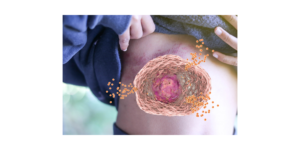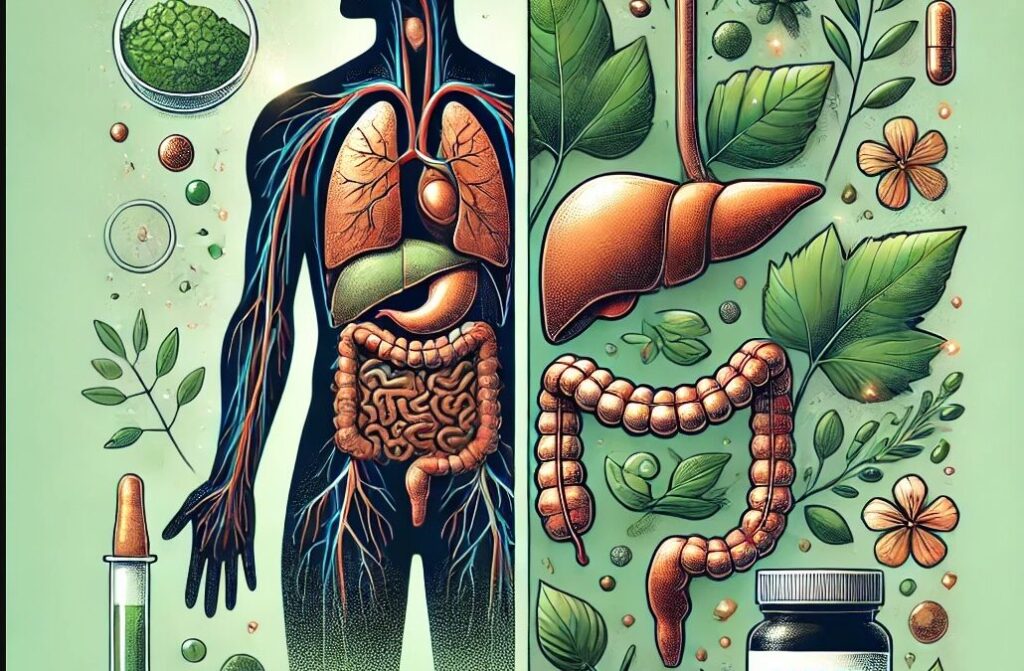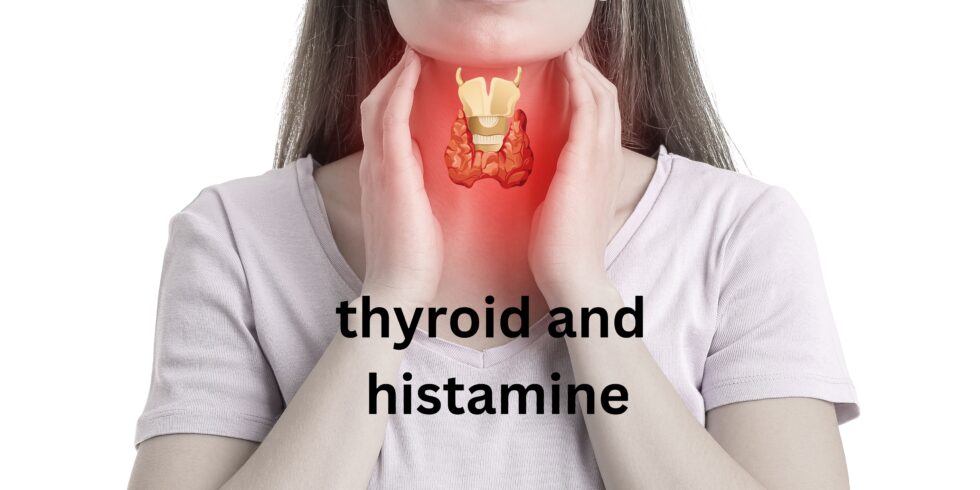The Hidden Impact of Copper Toxicity and Histamine Intolerance
Copper toxicity is a lesser-known yet significant factor that can lead to various health issues, including histamine intolerance. Histamine, an essential compound in the body, plays a vital role in immune responses, gastric acid secretion, and neurotransmission. However, when histamine levels are imbalanced, it can result in uncomfortable symptoms like headaches, hives, and digestive disturbances.
Understanding the link between copper toxicity and histamine issues is crucial, especially for those struggling with interstitial cystitis (IC). Many bladder symptoms associated with IC are related to elevated histamine levels or histamine intolerance.
In my practice, I’ve observed that a significant number of my patients suffer from copper toxicity symptoms. This, I believe, is a major factor contributing to the initial infections that trigger a cascade of biofilm infections, eventually leading to bladder damage and chronic inflammation.
By exploring the connection between copper toxicity and histamine issues, we can uncover strategies to manage and potentially alleviate these symptoms, paving the way for improved health and well-being. Keep reading to discover how addressing copper toxicity symptoms can make a significant difference in your health journey.
What is Histamine Intolerance?
Histamine is a powerful biogenic amine that plays several crucial roles in your body. It’s involved in local immune responses, regulating gut function, acting as a neurotransmitter, and affecting various bodily functions such as gastric acid secretion.

Functions of Histamine
- Immune Response:
- Histamine is released by mast cells and basophils during immune responses to pathogens. It increases the permeability of blood vessels, allowing white blood cells to access and combat infections more effectively.
- Gastric Acid Secretion:
- In the stomach, histamine binds to H2 receptors on parietal cells, stimulating the secretion of gastric acid. This acid is essential for digesting food and absorbing nutrients.
- Neurotransmission:
- In the brain, histamine acts as a neurotransmitter, influencing wakefulness, appetite control, and cognitive functions. It plays a key role in regulating sleep-wake cycles and energy metabolism.
- Inflammation and Allergic Reactions:
-
- Histamine is a key mediator of inflammation and allergic reactions. It causes symptoms such as itching, swelling, and redness by dilating blood vessels and increasing their permeability.

Histamine’s Role in the Gut and Bladder
In the gut, histamine plays a vital role in regulating gut motility and gastric acid secretion, which are crucial for digestion and nutrient absorption. However, excessive histamine can lead to digestive issues such as bloating, diarrhea, and abdominal pain. Histamine intolerance occurs when there is an imbalance between the levels of histamine and the body’s ability to break it down, often due to a deficiency in the enzyme diamine oxidase (DAO), which is responsible for histamine degradation.
In the bladder, histamine can contribute to inflammation and pain, particularly in conditions like interstitial cystitis (IC). Elevated histamine levels can cause the bladder to become hypersensitive, leading to symptoms such as urinary urgency, frequency, and pelvic pain. This is why managing histamine levels is crucial for individuals with IC, as it can help alleviate bladder inflammation and associated discomfort.
Copper’s Role in Histamine Degradation
Copper, along with other essential nutrients like zinc, vitamin C, and B vitamins, plays a crucial role in the function of diamine oxidase (DAO), the enzyme responsible for breaking down histamine. When copper levels are imbalanced, it can impair DAO function, leading to increased histamine levels and related copper toxicity symptoms. This makes understanding and managing copper levels vital for individuals dealing with histamine-related issues, particularly those affecting the gut and bladder.
Maintaining a balance of key nutrients, including copper, is essential for supporting overall health and well-being. By understanding the role of histamine in the body and its impact on gut and bladder health, you can take steps to manage histamine levels more effectively and improve your quality of life.
What Are Symptoms of Histamine Intolerance?
Common Histamine Intolerance Symptoms
Histamine intolerance occurs when the body accumulates histamine faster than it can break it down, leading to a variety of symptoms. These symptoms can mimic allergic reactions and other conditions, making it challenging to diagnose. This is often root in mast cell activation syndrome.
Common symptoms of histamine intolerance include:
- Headaches and Migraines: Increased levels of histamine can lead to vasodilation, which can cause headaches or migraines.
- Hives and Skin Irritations: Histamine can cause skin reactions like hives, rashes, and itching.
- Digestive Issues: Symptoms such as bloating, diarrhea, abdominal pain, and gas can occur due to histamine’s role in gut motility and gastric acid secretion.
- Nasal Congestion and Sinus Issues: Histamine can cause nasal congestion, runny nose, and sinus headaches.
- Fatigue: Chronic histamine intolerance can lead to persistent tiredness and fatigue.
- Anxiety and Mood Swings: Histamine acts as a neurotransmitter and can affect mood and mental health.
- Palpitations and Heart Issues: High histamine levels can influence heart rate and cause palpitations or irregular heartbeats.
- Flushing and Sweating: Histamine can cause the skin to flush and increase sweating.
- Bladder pain and burning : Histamine can cause the classing pain associated with IC/BPS.
How Histamine Intolerance Affects Daily Life
Histamine intolerance can significantly impact daily life, as the symptoms can be chronic and debilitating. People with histamine intolerance may experience:
- Disrupted Sleep: Histamine plays a role in wakefulness, and high levels can interfere with sleep, leading to insomnia or restless sleep.
- Dietary Restrictions: Many foods, especially aged, fermented, or processed foods, are high in histamine. Avoiding these foods can be challenging and may lead to a limited diet.
- Mental Health Struggles: The anxiety, mood swings, and brain fog associated with histamine intolerance can affect mental health, making it difficult to focus, work, or enjoy daily activities.
- Social and Lifestyle Impacts: Constantly managing symptoms and dietary restrictions can limit social interactions and affect one’s quality of life. For example, dining out or attending social gatherings can become stressful.
- Chronic Discomfort: The physical symptoms, such as headaches, skin issues, and digestive problems, can cause ongoing discomfort and pain, making everyday tasks more difficult.
Understanding and managing histamine intolerance is crucial for improving quality of life. This often involves dietary changes, addressing underlying health issues, and ensuring adequate levels of nutrients that support histamine degradation, such as copper, zinc, and vitamins B6 and C.
The Role of Nutrients in Degrading Histamine
Importance of Copper, B6, B5, and Zinc in Histamine Degradation
Histamine degradation is a critical process in maintaining healthy histamine levels in the body, and several key nutrients play essential roles in this process. Copper, vitamin B6 (pyridoxine), vitamin B5 (pantothenic acid), and zinc are particularly important for the effective breakdown of histamine.
- Copper: Copper is necessary for the proper function of enzymes involved in histamine degradation. It aids in the activity of diamine oxidase (DAO), the primary enzyme responsible for breaking down histamine.
- Vitamin B6 (Pyridoxine): Vitamin B6 supports the function of DAO and helps convert histamine into inactive metabolites, preventing histamine buildup.
- Vitamin B5 (Pantothenic Acid): Vitamin B5 plays a role in the synthesis and metabolism of neurotransmitters and can support the overall process of histamine breakdown.
- Zinc: Zinc is crucial for the synthesis and activity of DAO, making it an essential nutrient for histamine degradation.
How DAO (Diamine Oxidase) Requires Zinc, Vitamin C, B6, and Copper
Diamine oxidase (DAO) is the primary enzyme responsible for degrading histamine, particularly in the gut. The activity of DAO is highly dependent on several nutrients:
- Zinc: Zinc is a cofactor for DAO, meaning it is essential for the enzyme’s proper function. Without adequate zinc, DAO cannot effectively break down histamine.
- Vitamin C: Vitamin C supports the regeneration and activity of DAO. It helps maintain the enzyme’s stability and enhances its ability to degrade histamine.
- Vitamin B6 (Pyridoxine): Vitamin B6 is necessary for the conversion of histamine into inactive metabolites. It enhances DAO activity, ensuring efficient histamine breakdown.
- Copper: Copper is another cofactor required for DAO function. Adequate copper levels ensure that DAO can effectively metabolize histamine.
Other Enzymes Involved in Histamine Breakdown and Their Nutrient Requirements
In addition to DAO, other enzymes also play roles in histamine breakdown, and they require specific nutrients for optimal function:
- Histamine N-Methyltransferase (HNMT): This enzyme breaks down histamine in tissues other than the gut. It requires S-adenosylmethionine (SAMe) for its activity.
- Enzymes Requiring B Vitamins:
- Vitamin B2 (Riboflavin): Necessary for the production of flavin adenine dinucleotide (FAD) and flavin mononucleotide (FMN), which are involved in redox reactions that help metabolize histamine.
- Nicotinamide Adenine Dinucleotide (NAD): Synthesized from vitamin B3 (niacin), NAD is essential for various metabolic processes, including those involved in histamine degradation.
- Vitamin B1 (Thiamine): Supports overall metabolic processes and can indirectly influence histamine metabolism.
- Folate (Vitamin B9): Folate is crucial for the synthesis of SAMe, which is required by HNMT to break down histamine.
Ensuring adequate intake of these nutrients is vital for maintaining effective histamine degradation. Deficiencies in any of these key nutrients can impair histamine metabolism, leading to elevated histamine levels and associated symptoms.
What is Copper and Its Key Benefits?

Overview of Copper as a Trace Mineral
Copper is a trace mineral that is vital for numerous physiological functions in the body. Although it is required in small amounts, it plays a significant role in maintaining overall health and well-being. Copper is naturally present in various foods, including nuts, seeds, seafood, and whole grains, making it accessible through a balanced diet.
Essential Roles of Copper in the Body
- Energy Production:
- Copper is a crucial component of several enzymes involved in energy production. It helps in the synthesis of adenosine triphosphate (ATP), the primary energy currency of the cells, through its role in the electron transport chain.
- Immune Function:
- Copper supports the immune system by aiding in the production and activity of white blood cells. It has antimicrobial and antifungal properties that help protect the body against infections.
- Nervous System Support:
- Copper is essential for the development and maintenance of the nervous system. It aids in the formation of myelin, the protective sheath around nerves, which ensures efficient transmission of nerve signals.
- Antimicrobial and Antifungal Properties:
- Copper’s antimicrobial and antifungal properties make it effective in fighting infections. It can inhibit the growth of harmful bacteria, viruses, and fungi, contributing to overall health.
- Healthy Pregnancy:
- Copper is important for a healthy pregnancy. It plays a role in fetal development, particularly in the formation of the heart, blood vessels, and nervous system. Adequate copper levels are necessary to support the increased physiological demands during pregnancy.
- Antioxidant Cofactor:
- Copper acts as a cofactor for superoxide dismutase (SOD), an important antioxidant enzyme. SOD helps neutralize free radicals, protecting cells from oxidative damage and reducing inflammation.
What is Copper Toxicity Anyway?
Copper toxicity occurs when there is a buildup of stored bio-unavailable copper in the body. The liver is the primary storage site for this excess copper, with the brain serving as a secondary location. Copper can also accumulate in other organs and tissues, including the heart, kidneys, pancreas, spleen, lungs, bones, and muscles.
Several factors contribute to copper toxicity, making it an increasingly common issue. These factors include the use of birth control pills, copper IUDs, vegetarian diets, copper piping, and various estrogenic exposures. Despite its prevalence, copper toxicity often goes undetected because the imbalance may not appear in blood tests. This is due to the blood’s natural self-regulating homeostatic mechanisms, which maintain stable copper levels, leaving many individuals unaware of their copper imbalance. Most people have copper toxic symptoms and do not even know it.
Levels of copper accumulation exist not as a black-and-white diagnosis but rather along a continuum or spectrum. On one extreme, there’s severe copper deficiency; on the other extreme, there’s copper toxicity. Along this continuum are infinite degrees of accumulation and imbalance. Many people have varying degrees of accumulation yet may not necessarily warrant the label of being copper toxic.
Copper toxicity is widespread and one of the most misunderstood epidemics of our time. One of the most common and important imbalances observed in clinical practice with trace minerals is the combination of excess copper and deficient zinc, and copper toxicity and histamine intolerance.
Copper Toxicity vs. Deficiency
Many people who suspect they might be experiencing copper toxicity often find themselves confused. After searching online, they discovered that the symptoms of copper toxicity can resemble those of copper deficiency. This confusion is exacerbated by the lack of education on copper toxicity, as most information focuses on deficiency without warning about the potential for toxicity. In reality, much of the copper deficiency observed in Western countries can be attributed to varying degrees of copper toxicity.
True dietary copper deficiency in the West is relatively rare. The Recommended Daily Allowance (RDA) for copper is just 900 micrograms, an amount that is not hard to obtain from a standard or even semi-healthy diet. Common foods such as seeds, baked potatoes, and dark chocolate can easily meet or exceed the RDA for copper. While a minority of the population has a true copper deficiency due to a genetic defect in their ATP7A gene, this is uncommon.
Most people have a deficiency of bio-unavailable copper, where excess exposure may have contributed to the issue in the first place. Excess copper can act as a cytotoxin, overstimulating neurons and leading to eventual damage. Initially, individuals with high copper levels may feel stimulated and energized, but chronic overstimulation can wear down the body, leading to adrenal hypofunction or insufficiency, and sometimes even full-blown burnout.
Adrenal insufficiency can result in the liver’s reduced ability to produce adequate ceruloplasmin, a protein that binds copper and makes it bioavailable. Without sufficient ceruloplasmin, excess copper gets stored in a bio-unavailable form in soft tissues, creating a condition that mimics deficiency because the body cannot use the stored copper effectively.
Signs of Copper Toxicity

Copper toxicity can result in a wide range of symptoms, and it’s important to note that many of these symptoms can also have other causes. Here are some common signs of copper toxicity:
- Fatigue and exhaustion
- Racing mind
- Feeling tired but wired
- Emotional numbing
- Memory issues and concentration problems
- Brain fog and spaciness
- Hypothyroidism
- Nausea
- High anxiety and panic attacks
- Depression
- Hair loss
- Ruminating negative thoughts
- Loss of libido
- Obsessive-Compulsive Disorder (OCD) and relationship OCD
- Withdrawal and social isolation
- Chronic Epstein-Barr virus
- Chocolate cravings
- Allergies and mold sensitivity
- Insomnia
- Increased premenstrual syndrome (PMS) symptoms
- Constipation
- Anemia
- Manic mood swings
- Despair, hopelessness, and suicidal thoughts
- Joint aches and pains
- Depersonalization
- Candida and yeast overgrowth
- Hypoglycemia
- Headaches
- Reduced metabolism and weight gain
- Paranoia
- Attention Deficit Disorder (ADD)
- Endometriosis
- Pseudo-bipolar disorder and schizophrenia
These symptoms can vary widely among individuals and may overlap with other health conditions, making it essential to consider copper toxicity as a potential underlying factor when experiencing these issues.
Factors that Contribute to Copper Toxicity
There are numerous factors that can lead to the accumulation of copper in the body, resulting in copper toxicity. The three biggest contributing factors are estrogenic exposures, copper IUD contraceptives, and dietary choices beyond just copper consumption. Here are the key contributors:
- Estrogenic Exposures:
- Oral Contraceptives and Hormone Replacement Therapies: These increase estrogen levels, which can raise copper levels in the body.
- Xenoestrogens and Phytoestrogens: Found in various environmental sources and plant-based foods, respectively.
- Copper IUD Contraceptives:
- Copper IUDs: Copper ions from the IUD’s copper wire are directly released into the body, contributing to copper buildup.
- Dietary Choices:
- Plant-Based Diets: Higher phytate content in plant-based foods can impair zinc absorption. Adequate zinc is necessary to balance copper levels.
- In-Utero Transmission:
- Maternal Transmission: Copper can be passed from mother to fetus. Multiple pregnancies in quick succession heighten this risk, as copper levels rise in the third trimester and may not always re-regulate.
- Dental Fillings and Crowns:
- Dental Fillings: Known to contain 16-30% copper, contributing to copper exposure.
- Copper Cookware and Piping:
- Copper Cookware: Used for thousands of years, this can leach copper into food.
- Copper Piping: Can contribute to copper intake through drinking water.
- Incorrect Supplementation:
- Supplements: Incorrect or excessive supplementation can lead to copper toxicity.
- Occupational Exposure:
- Workplace Exposure: Certain occupations involve high levels of copper exposure.
- Medications:
- Medications Affecting Liver and Gallbladder: These organs are primary excretory pathways for copper, and medications can impair their function.
- Biliary Obstruction and Gallbladder Issues:
- Gallbladder Problems: These can impair the body’s ability to excrete copper efficiently.
- Stress:
- Adrenal and Mineral System Impact: Stress affects the adrenals and the mineral system, allowing copper to build up.
- Liver Disease and Liver Damage:
- Liver Conditions: These can impair copper detoxification and excretion.
- Copper Sulfate:
- Fungicide: Often used to spray on organic crops, contributing to copper exposure.
- Other Toxic Exposures:
- Environmental and Occupational Exposures: Various toxic exposures can contribute to copper buildup.
- Constipation:
- Impaired Excretion: Constipation impairs copper’s efficient excretion via bile.
- Genetic Conditions:
- Pyroluria or Wilson’s Disease: These genetic conditions can impair copper metabolism.
- CYP1B1 or Other Mutations: Genetic mutations that impair estrogen detoxification can also contribute to copper toxicity.
Important Overview of Copper Metabolism
Intracellular copper is predominantly bound to metallothionein, a group of cysteine-rich proteins that play a crucial role in copper metabolism. These proteins protect cells from the toxic effects of excess copper by storing it in a non-toxic form. However, when metallothionein binding and copper clearance from the cell are impaired, cellular damage and cell death may occur due to copper accumulation.
Zinc supports the expression of metallothionein in both the liver and intestines. Adequate zinc levels are essential for maintaining healthy metallothionein levels, which in turn helps regulate copper levels and prevent copper toxicity. A deficiency in zinc can lead to lower metallothionein levels, allowing for greater accumulation of copper in its toxic form. However, excess zinc can also cause problems by increasing metallothionein production, potentially leading to copper deficiency.
Metabolism of Copper in the Liver
The liver is the primary organ for copper metabolism, utilizing specific cellular mechanisms to regulate copper levels. Liver cells have cellular membranes containing copper transport proteins called CTR1, which transport copper into the liver cells. Once inside, copper needs to be transported into a structure called the Golgi apparatus using the ATP7B protein.
ATP7B plays a crucial role in transferring copper into the Golgi apparatus, where it binds to apoceruloplasmin (a precursor protein) to form ceruloplasmin, the main copper-carrying protein in the blood. Ceruloplasmin carries the majority of copper in the bloodstream, ensuring it is transported to where it is needed in the body.
If there is too much copper in the liver cells, it is transported from the Golgi apparatus to the bile ducts, allowing excess copper to be excreted via bile and stool. This excretion process is vital for maintaining proper copper levels in the body.
Factors Affecting Copper Regulation
Despite the body’s mechanisms to regulate copper efficiently, several factors can impair this process:
- Biliary Impairments:
- Bile production and flow issues can reduce the body’s ability to excrete copper, leading to accumulation.
- Slow Motility or Constipation:
- Slow bowel movements can impair copper excretion via stool.
- Issues with ATP7B:
- Mutations in ATP7B, such as those seen in Wilson’s disease, hinder copper transport to bile for excretion, causing accumulation.
- Manganese is crucial for the proper functioning of ATP7B, and its deficiency can contribute to copper buildup.
- Mutations in SLC30A10 (rs884127) (+/-) The SLC30A10 gene encodes a manganese transporter protein, which is essential for the regulation of manganese (Mn) levels in the body. This transporter is primarily involved in the efflux of manganese from cells, particularly in the liver and brain, to prevent toxic accumulation. Proper function of SLC30A10 ensures that manganese levels remain within a safe range, supporting vital physiological processes such as enzyme activation, antioxidant defense, and neurotransmitter synthesis.
- Binding Copper to Apoceruloplasmin:
- Magnesium and retinol are essential for binding copper to apoceruloplasmin to form ceruloplasmin. Deficiencies in these nutrients can leave copper unbound and increase toxicity risk.
- Other Genetic Polymorphisms
Certain microbes in the body can also impair ATP7B’s regulatory mechanism, further complicating copper metabolism.
The Copper Connection to Birth Control and Estrogen
How Birth Control Affects Copper Levels
The birth control pill can influence copper levels in the body indirectly through its impact on estrogen. Estrogen, a key hormone in many birth control formulations, plays a significant role in regulating copper retention. When estrogen levels are elevated, as they often are with the use of birth control pills, the body tends to retain more copper.

Psychological and Physiological Effects
This increase in copper retention due to elevated estrogen levels can contribute to a range of psychological effects, such as depression and anxiety. Copper affects neurotransmitter balance, including the overproduction of norepinephrine, which is associated with heightened anxiety and stress responses.
When the copper connection is made, considering copper’s close link to increased rates of depression and its effect on raising tissue calcium and lowering magnesium, an imbalance can increase the risk of blood clots. Elevated copper levels can disrupt the balance of essential minerals like magnesium, zinc, and vitamin B6, which further exacerbates these issues.
Impact of Synthetic Progestin
It’s important to note that the synthetic progesterone used in birth control pills, known as progestin, does not function the same way as natural progesterone. Progestin can block natural progesterone from reaching its receptor sites, impairing its action. This interference means that the calming effects often associated with natural progesterone may not be achieved with synthetic progestin.
Moreover, synthetic progestin can inhibit the calming effect of progesterone by blocking the GABA receptor, potentially increasing anxiety levels. This blocking effect prevents the neuroinhibitory action that natural progesterone would typically provide, leading to increased anxiety patterns in some women.
Estrogen and Pregnancy
During pregnancy, estrogen levels rise significantly, increasing copper retention. This is a normal physiological response as copper is needed to support the formation of blood vessels for the developing baby. Serum copper levels almost double during pregnancy, particularly in the third trimester. After giving birth, however, the mother often cannot detoxify the excess copper effectively, whether due to inadequate liver and bowel function, impaired motility, or breastfeeding. This retained copper can contribute to postpartum depression (PDD), anxiety, and other emotional disturbances.
Estrogen Dominance and Copper Toxicity
Estrogen dominance does not always mean high estrogen levels; it refers to the ratio between estrogen and progesterone. A woman can have normal or even low estrogen levels but still be estrogen dominant if her progesterone levels are even lower. This imbalance is exacerbated by contraceptives, xenoestrogens, phytoestrogens, and stress, all of which can increase estrogen levels.
Estrogen dominance can mimic the shock phase of the stress reaction, as explained by Dr. Hans Selye, MD. Estrogen causes the pituitary gland to secrete hormones that impair the ovaries’ ability to produce progesterone while stimulating cortisol production. As women enter their late 30s, progesterone levels begin to decline more quickly than estrogen, further contributing to estrogen dominance. Between ages 35 and 50, estrogen levels drop by about 35%, while progesterone levels drop by about 75%, leading to increased estrogen dominance as menopause approaches.
Zinc Deficiency and Copper Accumulation
A zinc deficiency, which can be exacerbated by stress, allows copper to accumulate further. This is compounded by the presence of estrogens and xenoestrogens in the environment. If the body cannot efficiently detoxify or regulate these estrogens, the trend toward estrogen dominance continues. Women in the Western world are becoming increasingly estrogen dominant, leading to conditions such as cancer, infertility, and autoimmune diseases.
While assessing one’s copper and zinc balance can provide insights into estrogen-progesterone balance, it is not as accurate as directly measuring the hormones. One effective method for understanding hormone levels is the Dutch hormone test, which can provide a comprehensive view of hormone balance and inform targeted treatment strategies.
Copper’s Connection to Digestion and Dietary Considerations
Vegetarian and Vegan Diets and Copper Accumulation
Following a vegetarian or vegan diet can increase the risk of copper accumulation in the body. This is because plant-based diets often contain higher levels of copper. However, several factors influence how a plant-based diet affects copper levels, including the duration of the diet, the strength of one’s detox pathways, genetic factors, and other copper sources.

- Duration of the Diet:
- The length of time someone has been following a strict plant-based diet can impact copper accumulation. The longer the duration, the higher the potential for copper buildup, especially if the diet lacks adequate zinc, which is crucial for balancing copper levels.
- Detox Pathways:
- The effectiveness of an individual’s detox pathways plays a significant role in how well the body can manage and excrete excess copper. Efficient detoxification helps prevent copper from accumulating to toxic levels.
- Genetic Factors:
- Genetic variations, such as those in the BCM01 gene responsible for retinal conversion, can affect copper metabolism. These genetic differences can influence how efficiently the body processes and eliminates copper.
- Stress and Lifestyle:
- Life stressors can impact the body’s ability to detoxify and manage copper levels. Chronic stress can weaken the body’s detoxification systems, leading to increased copper retention.
- Additional Copper Sources:
- Other sources of copper, such as birth control pills or copper IUDs, can contribute to the total copper load in the body. When combined with a high-copper diet, these additional sources can exacerbate the risk of copper toxicity.
Dietary Considerations for Managing Copper Levels
For those on vegetarian or vegan diets, it’s important to consider dietary strategies to manage and balance copper levels:
- Zinc-Rich Foods: Include foods high in zinc, such as legumes, seeds, and low oxalate nuts, to help balance copper levels.
- Diverse Diet: Ensure a diverse diet that includes a variety of nutrients to support overall health and detoxification.
- Monitor Copper Intake: Be mindful of high-copper foods and aim for a balanced intake to prevent excessive accumulation.
- Support Detox Pathways: Incorporate foods and practices that support liver and gut health, such as consuming cruciferous vegetables, drinking plenty of water, and engaging in regular physical activity.
Why Vegan Diets Worsen Copper Toxicity
Vegan diets can worsen copper toxicity due to several factors:
- Retinol Deficiency:
- Retinol is required to lock the copper ion onto the ceruloplasmin transport protein. Without retinol, copper remains unbound and bio-unavailable, even as it accumulates.
- Vegans rely on their body’s conversion of beta-carotene to retinol. Those with the BCMO1 genetic variant have poor conversion, leading to retinol deficiency and copper issues.
- Zinc Deficiency:
- Zinc is crucial for metallothionein synthesis, which binds to copper for utilization and excretion. Without adequate zinc, metallothionein synthesis is impaired, allowing copper to accumulate.
- Phytates in plant foods interfere with zinc absorption, compounding the problem. The copper-zinc ratio in plant foods is already high, and phytates significantly impair zinc absorption.
- Hydrochloric Acid Deficiency:
- Adequate zinc and potassium are necessary for hydrochloric acid secretion in the stomach. A deficiency can reduce nutrient assimilation and make digesting animal protein harder, causing a distaste for meat.
- Sulfur Deficiency:
- Sulfur, found in amino acids like taurine, is crucial for bile production and liver detoxification. Bile is essential for copper excretion.
- Taurine is found in meat and to a lesser extent in seaweed but is absent in vegetables.
Restoring and Maintaining Liver Detoxification
Restoring and maintaining liver detoxification is one of the most important aspects of healing. Sulfur, mainly in the form of sulfur-containing amino acids like taurine, methionine, and cysteine, is necessary for the detoxification pathways in the liver. Vegans often struggle to remove toxic metals effectively because they are low in these essential sulfur-containing amino acids.
The Calcium Shell
One of the symptoms of copper toxicity that can develop at more extreme levels is known as the calcium shell. The calcium shell refers to increased calcification that forms a shell around the outside of cells, slowing the entry and exit of nutrients and thus slowing metabolism. This phenomenon also leads to increased calcification of the pineal gland, which is particularly susceptible to this effect.

Causes and Effects:
- Copper Toxicity and Stress: The stress caused by rising bio-unavailable copper in the body leads to an increase in calcium as a defense mechanism against stress.
- HTMA Indicator: On a Hair Tissue Mineral Analysis (HTMA), calcium levels above 165 milligrams percentage generally indicate a calcium shell pattern.
- Emotional Impact: The calcium shell has a numbing effect on emotions, leading to increased tendencies towards apathy, withdrawal, and rigidity.
- Stress and Mineral Imbalance: High stress levels can lead to the development of a calcium shell. Stress causes the body to lose magnesium and zinc from cells and tissues. As magnesium is depleted, more soft tissue calcification occurs, and the calcium-magnesium ratio increases.
Symptoms and Consequences:
- Physical Effects: Increased muscle tension, unstable blood sugar levels, and lower energy levels.
- Emotional Effects: Diminished awareness of feelings, increased depression, and anxiety.
- Mineral Interactions: As zinc antagonizes copper, a drop in zinc levels allows both copper and calcium levels to increase further.
What can you do?
If you suspect that copper toxicity or histamine issues are affecting your health, it’s essential to address the problem with the right tools and expertise. Here are a few ways you can figure out and manage these issues effectively:
- Work with an Experienced Professional: Running a Hair Tissue Mineral Analysis (HTMA) is a powerful way to uncover the root causes of your health issues. However, interpreting an HTMA requires expertise and experience. It’s crucial to work with someone like me who is trained and has years of experience with the right tests, specifically ARL or TEI. Understanding an HTMA is nuanced and requires more than just a weekend course; it demands years of dedicated experience.
- One-on-One Coaching: For those who want to dive deep and get to the bottom of their root causes, I offer personalized 1:1 coaching. This program includes several tests, one of which is the HTMA. Through this coaching, we can investigate your specific health issues and develop a tailored plan to address them effectively.
- HTMA Supercharged Program: If you’re looking for a more straightforward approach, my HTMA Supercharged program might be the right fit. While it’s not a coaching program, it offers significant value through professional HTMA interpretation and a customized vitamin/mineral supplement plan to correct imbalances, including copper toxicity.
- Upcoming Group Coaching Program: I’m excited to announce the upcoming launch of my group coaching program. This program is designed for those who want some of the benefits of individual coaching and lab testing at a lower cost point. Participants will have access to essential tests like HTMA and receive valuable insights and guidance to improve their health.
Take the Next Step: Ready to take control of your health and address copper toxicity and histamine issues? Whether you’re interested in personalized coaching, the HTMA Supercharged program, or joining the upcoming group coaching, there’s a solution that fits your needs. Let’s work together to uncover the root causes of your symptoms and pave the way for better health and well-being.



